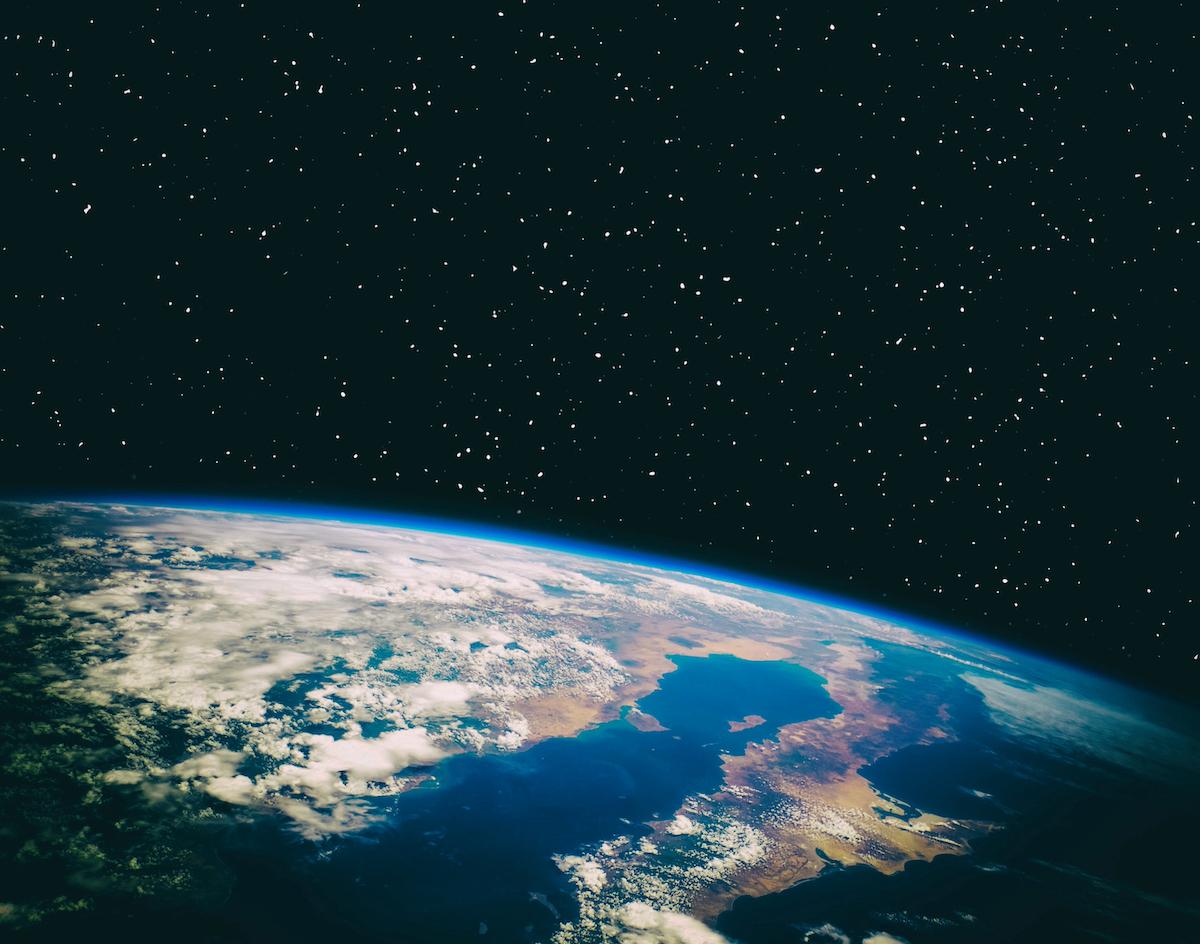The System of Things
Chapter One
By now you know that, as scientist Laura Kennedy reminds us, “biodiversity is the variety of life that you can find on Earth.” But because we can’t see all life on our planet, and how every species interconnects, we often ignore the importance of biodiversity – the variety of life on Earth.
For that reason, before we step forward, we first must take a step back.
This, obviously, is the world:
But that picture? What you’re looking at? It’s also the biosphere.
If Reggaeton superstar Don Omar is the King of Kings, then the biosphere is the Queen of Queens – the overarching ecosystem that encompasses all ecosystems on Earth.
The biosphere only extends from the sky we see above us to the soil and rocks below our feet. But this relatively small space? It’s where all biota – all living organisms – are found.
Biotic life, of course, is nothing without the abiotic.
The abiotic? Yes, the abiotic. You know, the non-living stuff.
You see, for the biosphere to exist, it needs the Earth’s geosphere – the all-powerful combination of the lithosphere, otherwise known as rock and soil – the hydrosphere – delicious H20 – and the atmosphere – no definition required.
The geosphere – the abiotic, non-living organisms? That’s where biota finds the energy to get out of bed each day and search out the nutrients to get through each day.
Throw in the perfect positioning of the sun and voila: you get the biosphere.
But the biosphere is the sum of its parts. What makes it cool? Biomes!
Biomes are deserts and rainforests and oceans and grasslands. They’re semi large groupings of places that have similar types of flora and fauna.
How high or low the temperature gets – or how moderate a climate is – helps determine the make up of each biome. So too does precipitation, or lack thereof.
But biomes – like, say, the montane forest biome – are big. Like super big. Biomes can stretch across a country or even across a portion of the world. And because biomes are so large, the landscape within each one can vary a little.
Take, again, the montane forest biome. Known for its temperate climate and forested habitat, you can find, say, sandy landscapes, like that found in Jackman Provincial Park in the Robson Valley. But that’s not all! This biome also includes inland rainforests and boreal forest-like wetlands and subalpine grasslands and barren alpine tundra – all of which can be found, coincidentally, in Mount Robson Provincial Park, which itself is found within the montane forest biome.
These unique landscapes within a biome are known as eco-regions. They might all share broad qualities like temperatures that vary with elevation or heavy precipitation downwind of mountains or summers that are a bit cooler than what most of us might enjoy, but each eco-region is also just a bit different from one another.
So, while a wetland and subalpine grassland in the Robson Valley are both grouped within the montane forest biome globally, a salamander locally is only found in the wetland areas and a bighorn sheep locally is only found in the subalpine areas.
The subtle differences between eco-regions within a biome – how the specific geography of one particular place creates the conditions for different organisms to exist and interact – is what makes an ecosystem unique.
And an ecosystem you ask? It’s a limited geographical area – say, the Robson Valley ecosystem – within a larger biome – say, the montane forest biome – that encompass different eco-regions – say rainforest, sub-boreal, subalpine and alpine tundra eco-regions – that work together to support different organisms – say, 182 bird species, 42 mammals, four amphibians and one species of snake – that, in turn, interact with one another to drive key natural processes that have both local and global impact – say, nutrient cycling!
And that might all sound like pointless nuance, but it’s not. Think of it like this:
What makes a community great? The neighbourhoods. It’s where the diversity is. It’s what makes a place unique. It’s what makes a place fun. It’s what makes a community successful and valuable to a region or country.
Mount Robson is no different.
The more neighbourhoods – the more eco-regions – in a community like this one, the more diversity of life that will call it home. That diversity is what helps the Mount Robson community – the living organisms in this ecosystem – thrive and contribute to nature’s bigger picture: biodiversity.
It’s why we can look at the bigger picture, or we can look at the smaller picture, but either way, both paint the same picture: Local communities, and our planet as a whole, only thrive – only survive – with a diversity of life because it’s the diverse ways diverse biota interact with abiotic factors that create the very specific conditions for very specific processes to occur.
And these processes? It’s what makes Mount Robson tick. And Canada. And our planet. In other words, these processes quite simply equal life itself.
Though one individual – even one population – might not matter to the future of Mount Robson or Canada or the world, like a game of Jenga, the more blocks in place – the more biotic life that exists – the stronger the structure is and the better everything functions.
But here’s the thing: in Jenga, it’s easy to see how the game is unfolding. With biodiversity, it’s not quite as easy. We have scientific tools, like the Diversity Index, to measure the diversity of our, um, diversity – what biota calls a place like Mount Robson home. And that’s great, but it’s not perfect either.
Science has helped us understand when water is safe to drink and when it isn’t. Science – and even our eyes – can tell us when the air is polluted and when it’s not. And though science has helped us understand what species live in a rainforest or in the high alpine, scientific tools can’t tell us how much biodiversity loss is too much biodiversity loss to withstand.
Each species – each ecosystem – operates and interconnects in different ways. We don’t always know which species or ecosystems are load-bearing; we don’t know which biotic Jenga blocks we can safely remove and which one’s removal will end the game. And that’s what makes biodiversity such a misunderstood, hard-to-tackle and increasingly urgent issue.



